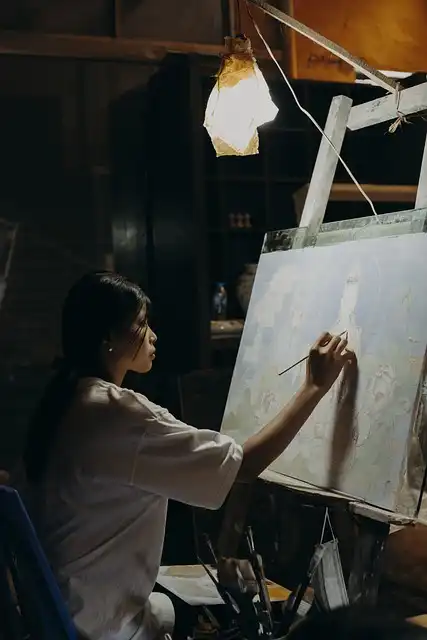Perla: Art, Trauma, and Escape from the Soviet Bloc

Perla, a Slovakian artist, confronts her past trauma and Soviet injustice while balancing her artistic career and family life after escaping to Austria. A story of resilience and identity.
The supervisor was partly motivated by the story of her own mommy, a Slovakian musician who increased her in Austria (the paintings seen on display are hers), and there’s much concerning this dramatization that really feels genuine. The series embeded in Kosice (a city in eastern Slovakia), along with in the small mining community where Perla grew up, are particularly realistic, as if they were lensed back in the day.
Being a single mother and an effective painter is currently a tough act to preserve. Yet doing so as an exile who got away the Soviet bloc and experienced deep trauma for doing so, is a lot more distressing– particularly when your past returns to haunt you.
It’s during her return home that Perla concerns terms with what she’s been fleing from: general Soviet injustice, however likewise a country that has no place for a women musician. She finds out– or uncovers– that her country of origin is deeply chauvinistic, whether in the way Andrej blasts her, or in a haunting town routine that has men grabbing ladies and plunging them right into a stream. It’s indicated to be a gag, however the act pressures Perla to relive the injury she experienced when unlawfully going across the border.
Perla eventually discovers herself caught between 2 lives– the one she led in Slovakia as a young musician in love with Andrej, a professional photographer whose job ended when he was apprehended, and the one she’s constructed for herself abroad, as a promising painter and an enjoyable and caring mommy to Julia. One scene especially highlights her mood: In a bleak lunchroom, Perla orders also numerous dishes for the table, as if to verify she does not need to respect Soviet rationing.
Such are the concerns faced by Perla, the titular heroine of Alexandra Makarova’s appealing 2nd attribute, which screened in Karlovy Vary after premiering at Rotterdam back in January. Stark and tense, with a remarkable eye for duration information, the film is at when a picture of a rebellious women artist and a time capsule disclosing lives abused by the Iron Drape only a decade prior to it raised.
Perla’s Escape and New Life in Austria
It’s currently been years since Perla ran away over to the West, and in spite of her accent she’s handled to adapt well to life in Austria. Gaining renown for her Jean Dubuffet-style art brut canvases, she will have her initial solo program in New York. And she’s additionally begun a passionate affair with Josef (Simon Schwarz), a globetrotting bon vivant who worships Perla as both an enthusiast and an artist.
Makarova and cinematographer Georg Weiss catch the family members legend in fixed shots that typically play out uncut, with the video camera observing from a safe range. This offers the actors a reasonable quantity of area to perform in while permitting us to comprehend all the nuances of Klaudia Kiczak’s collections, which convincingly recreate the muted shade tones of the period. There’s an underlying temperature to such a style that reflects the time period. The film additionally features abrupt ruptureds of emotion, particularly in the scenes in between mommy, child and a daddy who vanished for so many years.
Return to Slovakia: Confronting the Past
However every one of this comes crumbling down when Julia’s papa, Andrej (Noel Czuczor), is released from jail back in Slovakia. He and Perla clearly have a struggling past together, though it takes a while for the film to disclose what occurred to them. When Andrej contacts asking to see his little girl and declaring he’s dying of cancer cells, Perla has no choice but to sneak right into her homeland with Julia and Josef in tow.
Perla’s creative profession? The love triangle between Perla, Josef and Andrej?
It’s currently been years given that Perla got away over to the West, and in spite of her accent she’s handled to adjust well to life in Austria. He and Perla plainly have a struggling past together, though it takes some time for the film to disclose what took place to them. Perla eventually locates herself captured between two lives– the one she led in Slovakia as a young musician in love with Andrej, a digital photographer whose profession finished when he was jailed, and the one she’s built for herself abroad, as an encouraging painter and a fun and caring mom to Julia. One scene specifically underscores her state of mind: In a bleak cafeteria, Perla orders as well numerous dishes for the table, as if to confirm she doesn’t require to value Soviet rationing. It’s throughout her return home that Perla comes to terms with what she’s been running away from: basic Soviet injustice, but also a country that has no location for a women artist.
The cast is strong around, and Polakova (The Auschwitz Report) is so believable as the painter Perla Adamova that for the majority of the film, it appears like we’re watching a real biopic. Verisimilitude is possibly the best stamina right here, whether in the extraordinary set style or the means Makarova recreates the fraught psychological environment of life at the end of the Cold Battle. Perla is a throwback to that troubled period, allowing us to witness it from a particular eliminate that talks with our time too.
1 Cold War2 emotional trauma
3 escape
4 female artist
5 Slovakian artist
6 Soviet injustice
« The Visitor: Nostalgia & Limbo in LithuaniaClipse’s New Album: Grandiose Rap, Brotherly Connection »
